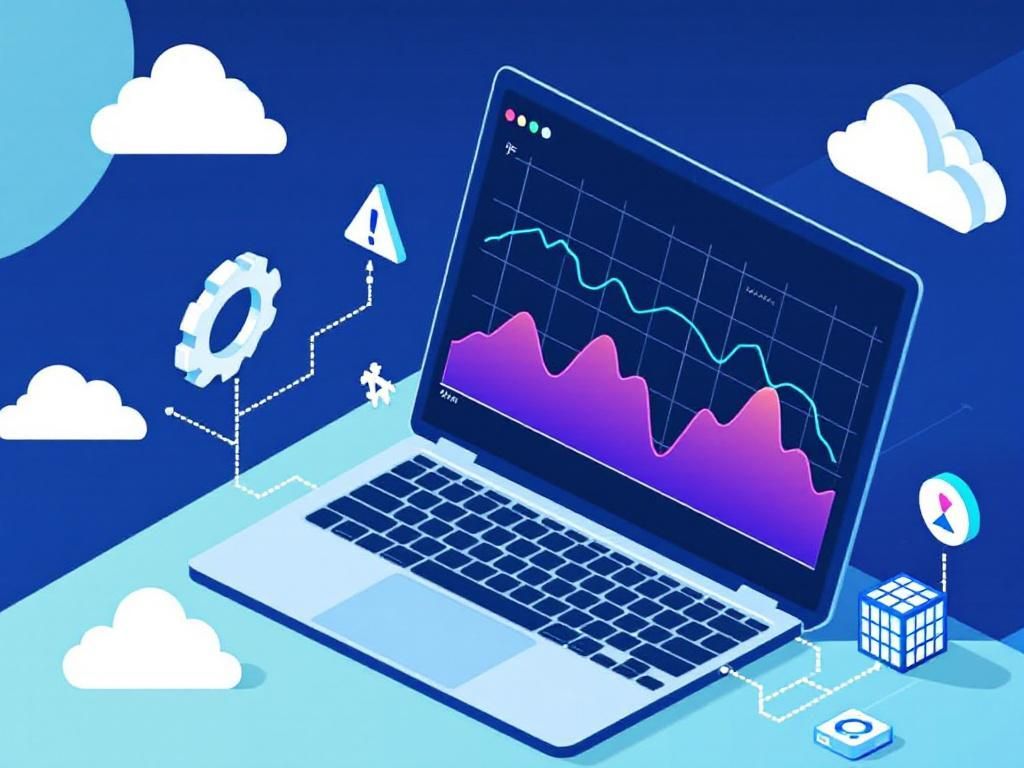Boost SaaS Performance with Key Monitoring Strategies
Discover essential monitoring strategies to enhance your SaaS performance and ensure optimal user experience.

In the rapidly evolving landscape of Software as a Service (SaaS), performance monitoring has emerged as a critical factor for success. As businesses increasingly rely on cloud-based solutions, ensuring optimal performance becomes paramount. This article delves into the essential strategies that can help enhance SaaS performance, ensuring reliability, scalability, and an unmatched user experience.
Table of Contents
Understanding SaaS Performance Metrics
Before diving into strategies, it’s essential to comprehend the key performance metrics that affect SaaS applications. By monitoring these metrics, organizations can identify bottlenecks and enhance their applications effectively. Some of the most critical SaaS performance metrics include:
- Response Time: The duration it takes for the system to respond to a user’s request.
- Availability: The percentage of time the service is operational and accessible to users.
- Error Rate: The frequency of errors encountered by users during their interaction with the application.
- Load Capacity: The number of simultaneous users that the application can handle without performance degradation.
- User Satisfaction: Metrics that gauge user experience, often derived from surveys and feedback.
Key Monitoring Strategies
Implementing effective monitoring strategies can significantly bolster the performance of SaaS applications. Here are some of the most impactful strategies:
1. Real-Time Monitoring
Real-time monitoring allows businesses to track performance metrics in real-time, facilitating faster response to potential issues. Key practices include:
- Utilizing dashboards that display real-time data on performance metrics.
- Setting up alerts for performance anomalies or service downtimes.
- Conducting regular load tests to foresee capacity issues.
2. User Experience Monitoring
Understanding how real users experience your SaaS application is critical. This can be achieved through:
- Session Replay: Tools that record user sessions allow you to see exactly how users interact with your application, providing insights into potential usability issues.
- Synthetic Monitoring: Simulating user interactions with your application to measure response times and availability from various locations.
- Performance Analysis Tools: Using tools like Google Lighthouse to identify performance bottlenecks and receive recommendations for improvement.
3. Infrastructure Monitoring
Monitoring the infrastructure on which your SaaS application runs is essential for maintaining optimal performance. Key areas to focus on include:
- Server Health: Regularly checking CPU usage, memory consumption, and disk IO.
- Network Performance: Ensuring that network latency is minimal and bandwidth is sufficient to handle user traffic.
- Third-Party Services: Monitoring performance and availability of any external APIs or services that your application relies on.
4. Anomaly Detection and Alerting
Establishing anomaly detection mechanisms can help identify unusual patterns that may indicate performance issues. Consider the following approaches:
- Machine Learning Models: Employing machine learning algorithms to analyze historical performance data and detect deviations from expected behavior.
- Threshold-Based Alerts: Setting predefined thresholds for key metrics, so that alerts are triggered when these thresholds are crossed.
5. Continuous Performance Testing
Regular performance testing ensures that any changes made to the software do not compromise its functionality. Strategies include:
- Unit Testing: Conducting performance tests on individual components of the application.
- Load Testing: Simulating high-load conditions to assess how the application performs under stress.
- Integration Testing: Testing how different components of the application interact with one another under real-world conditions.
Leveraging Tools and Technologies
Implementing monitoring strategies effectively requires the right set of tools. Here’s a selection of popular tools that can assist in SaaS performance monitoring:
| Tool | Functionality | Best Use |
|---|---|---|
| New Relic | Application performance monitoring | Real-time insights into application performance |
| Datadog | Infrastructure monitoring | Comprehensive monitoring across websites and apps |
| Pingdom | Website monitoring | Uptime and performance tracking |
| Sentry | Error tracking | Detecting and fixing crashes in real time |
Best Practices for Optimizing SaaS Performance
In addition to the aforementioned strategies, following best practices can further ensure that your SaaS application runs smoothly:
- Optimize Code: Regularly review and refactor code to enhance efficiency and reduce resource consumption.
- Implement Caching: Utilize caching mechanisms to store frequently accessed data temporarily, which can reduce the load on databases.
- Scalability Planning: Design the application architecture with scalability in mind, enabling it to handle increased load seamlessly.
- Regular Updates: Keep both the software and its dependencies updated to leverage performance improvements and security fixes.
- Engage with Users: Regularly solicit feedback from users to identify areas of the application that may require optimization.
Conclusion
Enhancing SaaS performance is an ongoing process that requires a combination of effective monitoring strategies, the right tools, and best practices. By implementing the strategies outlined in this article, organizations can ensure that their SaaS applications deliver optimal performance, resulting in improved user satisfaction and retention. Indeed, in the competitive SaaS landscape, those who prioritize performance monitoring are bound to stay ahead of the curve.
FAQ
What are key monitoring strategies for boosting SaaS performance?
Key monitoring strategies for boosting SaaS performance include real-time performance tracking, user experience monitoring, application performance management, and server health checks.
How does real-time performance tracking improve SaaS applications?
Real-time performance tracking allows teams to identify and resolve issues immediately, ensuring optimal performance and user satisfaction.
What tools can be used for application performance management in SaaS?
Popular tools for application performance management include New Relic, Datadog, and AppDynamics, which provide insights into application health and performance.
Why is user experience monitoring important for SaaS?
User experience monitoring is crucial because it helps identify usability issues and bottlenecks that can hinder customer satisfaction and retention.
What are the benefits of conducting regular server health checks?
Regular server health checks help prevent downtime, enhance security, and ensure that resources are being used efficiently to support SaaS performance.
How can analytics improve SaaS performance monitoring?
Analytics provide valuable insights into usage patterns and performance metrics, enabling businesses to make data-driven decisions to enhance their SaaS offerings.



